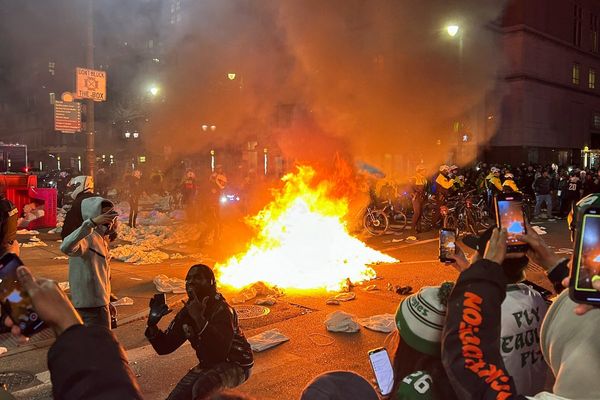St Petersburg
The “Window on the West” created three centuries ago by Peter the Great is simply the most beautiful city in Russia. (I’ve checked.)
The city formerly known as Leningrad is also entwined with Russian history: the storming of the czar’s residence, the Winter Palace, in October 1917, was the event which brought Lenin to power.
The palace is now part of the Hermitage Museum. Besides astonishing early 18th-century architecture, the art collection in the Hermitage is miraculous.
Russia’s former capital has a living work of art in the shape of the Metro: St Petersburg’s underground railway is second only to Moscow’s in its scale and grandeur. The 69 stations include the deepest in the world, Admiralteiskaya, which is 282 feet (85 metres) below the surface.
St Petersburg is also home to the northernmost stadium in the World Cup, and the most spectacular. The Japanese architect Kisho Kurosawa was invited to create an arena like no other; it looks like a spaceship which has landed on Krestovsky Island in St Petersburg. It will host seven matches (joint highest with the Luzhniki in Moscow), including one match of the Round of 16, a semi-final and the third-place final.
Moscow
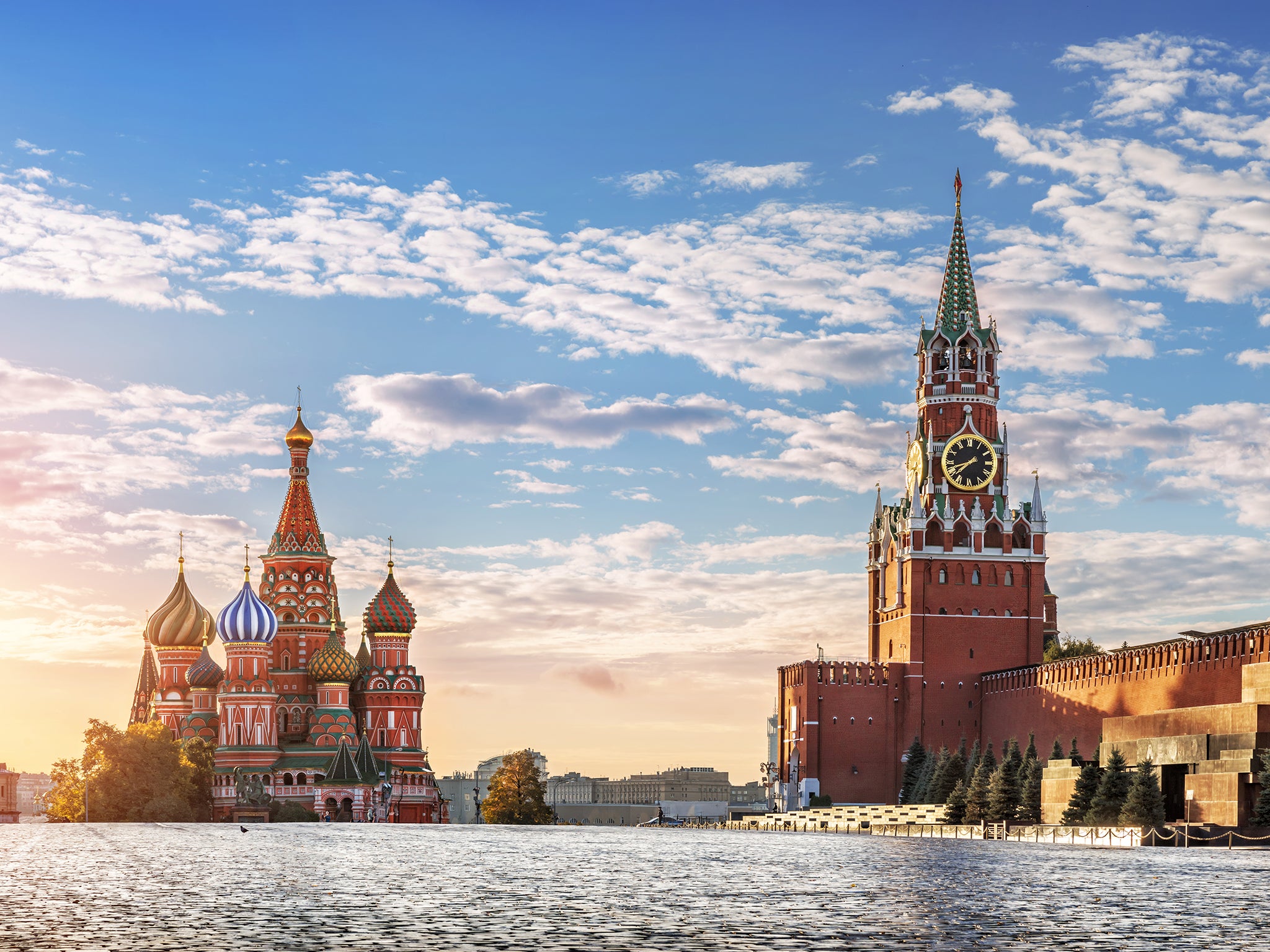
The city which regained its status as capital of Russia a century ago is the hub of everything in the world’s largest country, and full of attractions to fill in the time between matches.
Start at the heart of Moscow: Red Square, and the Kremlin – which as well as being Vladimir Putin’s power base is a fortress complex with five cathedrals. Just outside stands Lenin’s Mausoleum, with the first leader of the Soviet Union still on display, albeit with a very waxy complexion.
Much of Moscow’s architecture is on a vast scale, but there are some more intimate neighbourhoods such as the lanes of Kitai Gorod, “China Town”, dotted with ancient churches and low-rise buildings. And Gorky Park has been dramatically spruced up with Roman Abramovich’s money
The capital has the best hotels, with the Ritz Carlton the place to be if money is no obstacle. From the gaudy lobby to the oversized rooms, this is Moscow bling. The rooftop terrace offers cocktails, spectacular views and the chance to rub shoulders with oligarchs; £500 a night when it’s quiet, which won’t be during the World Cup.
The Luzhniki Stadium is Russia’s prime arena, though at 80,000 the capacity is down from over 100,000 during the 1980 Moscow Olympics. Formerly known as the Central Lenin Stadium, which opened in 1956, it was built in a surge of national pride after the Soviet Union won a haul of 71 medals in the 1952 Helsinki Olympics. A decade ago, Manchester United beat Chelsea 6-5 on penalties in the Champions’ League final at the Luzhniki.
Seven matches will be played here, including the opening game, Russia versus Saudi Arabia, one semi-final on 11 July and the final on 15 July.
Spartak Stadium, with a capacity of 42,000, is very much the little brother, and also a latecomer: supposed to be finished in 2007 the Spartak (or Otkrytiye Arena, as it’s officially known), it finally opened in 2014, finally giving FC Spartak a home of their own after nearly a century. It’s built on the old Moscow airport.
If England become runners-up in their group, they will be here on 3 July for the Round of 16 game against the winner of Group H – likely to be Poland or Colombia.
Sochi
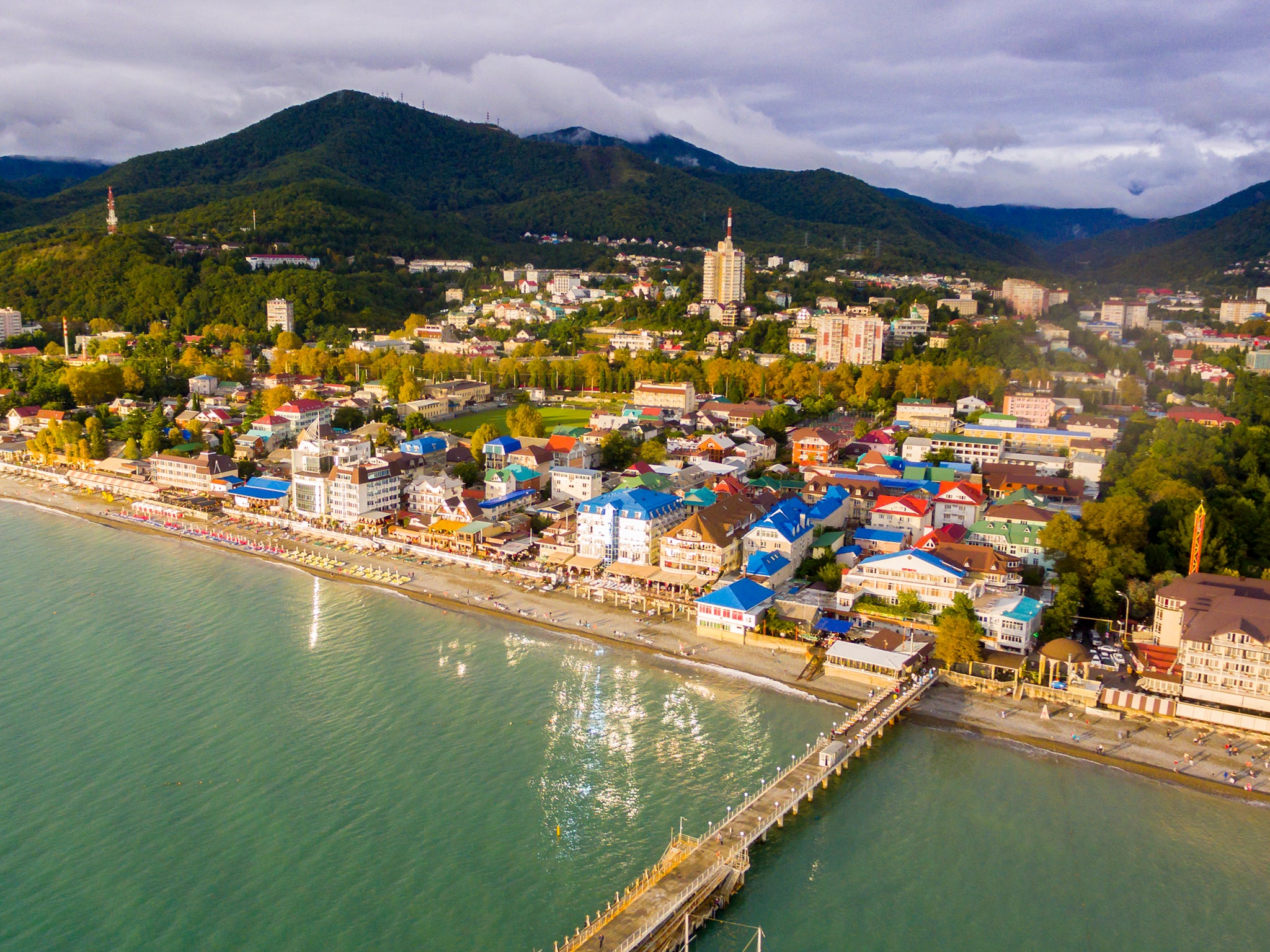
Because Sochi is a seaside resort at the heart of the Russian Riviera, fans can spend most of their time enjoying the sunshine, on some of the most popular beaches in Russia. Don’t expect the Caribbean, though: the beaches are rocky and grey. Thousands of fans will end up staying in sanatoria (Soviet-era wellness centres), a cheaper bet than the grand hotels where you get champagne and caviar for breakfast. Take your meals at Stolovaya Number 17, a Soviet-era style canteen. For some more retro-communist action, you can get your picture in front of the Lenin Mosaic beside the Sochi River.
Out of town, go for a tour of Stalin’s “dacha”, Zelenaya Roscha. The former leader’s country cottage includes the private cinema where the Soviet leader watched every single film before it was released, to decide whether it was fit for the people.
You can also go whitewater rafting on the mountain streams inland from Sochi.
The Fisht Stadium is the Winter Olympics arena from 2014, hosting the opening and closing ceremonies. It is the only British-designed stadium at Russia 2018, and supposedly resembles a snowcapped mountain peak. It is named after Mount Fisht, a nearby mountain (you can tell fellow fans it is exactly twice the height of the UK’s highest mountain, Ben Nevis). With room for 48,000, it’s the third-largest in the tournament after the Luzhniki in Moscow and the St Petersburg Stadium.
The pick of the Group games here are Portugal v Spain and Germany v Sweden. Sochi will also host one match of the Round of 16 and a quarter-final.
Nizhny Novgorod
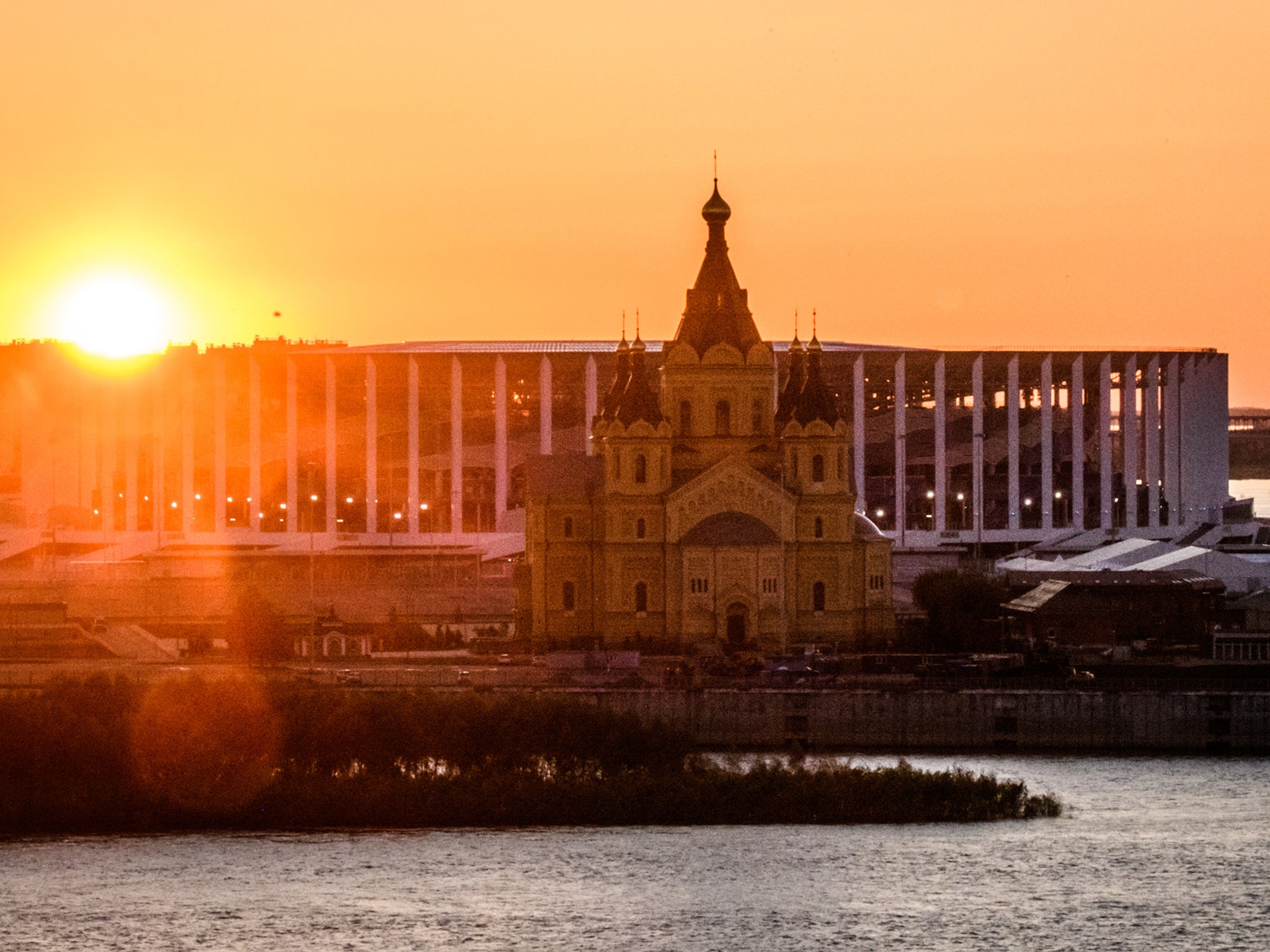
“St Petersburg is Russia’s head, Moscow is its heart, and Nizhny Novgorod is its wallet,” goes the saying. This is a big, rich city, known as Russia’s third capital. Under communism it became Gorky, but has now reverted to its original name, which means “lower new town”/
Any decent sized Russian city has a Kremlin, or citadel, and Nizhny Novgorod’s is one of the finest. The city also has more cathedrals than you could shake a corner flag at.
To sleep? Check out the Hotel Baker Street’s very own Youtube film before you book; it includes shots of the air-conditioning units, rather a lot of toilets and a curious sign hanging on a door handle saying “Please remove the room”. If £50 a night is too expensive, try one of the “resting rooms” at the station, less than £10 a night with breakfast an extra fiver. And if you’re feeling homesick, the Angliski Posolstvo bar translates as “English Consulate”, and serves some familiar beers.
In terms of scenery, Nizhny Novgorod Stadium is probably the best located in Russia. A brand new arena, holding 45,000 people, has been built at the confluence of the Volga and Oka rivers. It is near the Alexander Nevsky Cathedral, and overlooking the Kremlin, situated on the other side of the Oka. The design is said to be inspired by aspects of nature in the Volga region: water and wind. It even has an elevated walkway winding right around it.
(On 24 June England play Panama, the middle of their three matches in Group G.)
Kaliningrad
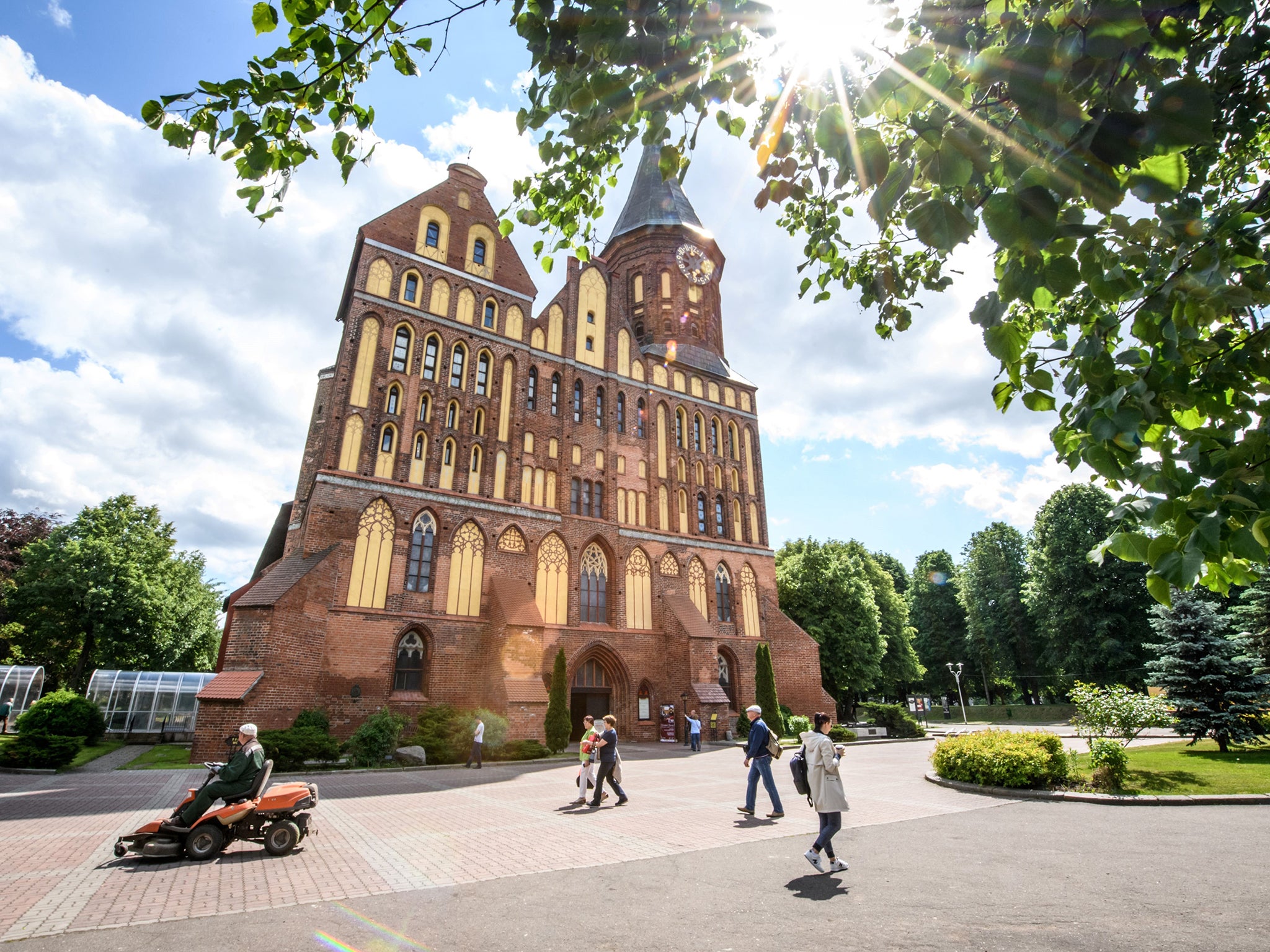
This curious city, and the Yorkshire-sized region that surrounds it, is part of Russia – but nowhere near the vast majority of the country. Kaliningrad is an enclave, a fragment of territory pinched between Poland and Lithuania. As Konigsberg (“king’s mountain”), it was the capital of Prussia, which in turn became the mainstay of the German empire. Like much of this part of the world, Konigsberg was flattened in the Second World War. It was assigned to the USSR at the Potsdam Conference, and resurrected as Kaliningrad.
The main sight is the grand cathedral, rebuilt with the help of German donations. Look out for the statue of Immanuel Kant, the philosopher who believed perpetual peace could be secured through universal democracy and international cooperation. That went well, then.
To reach Kaliningrad, the best place to start is Gdansk in Poland. That might also be a good place to stay.
How short is Kaliningrad of accommodation? Well, for the England game there’s a pop-up campground nine miles out which is asking £50 a night for a place in a two-person tent, and you have to send the money upfront. I am in town for Croatia v Nigeria, and I’ve booked what appears to be the last room at a sensible price, around £60. But some hoteliers are asking for upwards of £1,000. All the more reason fo head south to sleep over the border in Poland.
Where football leads, the rest follows. The new Kaliningrad stadium, also known as the Baltic Arena, has put the city’s Oktyabrsky Island on the map. In the unlikely event that you have a map of this wayward Russian city, you’ll find that it’s not much of an island, simply filling a bulge in the Progolya river. It is only a mile east of the cathedral. But until Russia 2018 came along, the island was a wilderness. Now it will be temporary home to 35,000 fans.
After England play Belgium here on 28 June, for what is likely to be the deciding match in Group G, Kaliningrad’s moments in the sun will be over. The stadium will be handed to Baltika Kaliningrad, whose average home gate is around 4,000, so 10,000 seats are going to be removed
Yekaterinburg
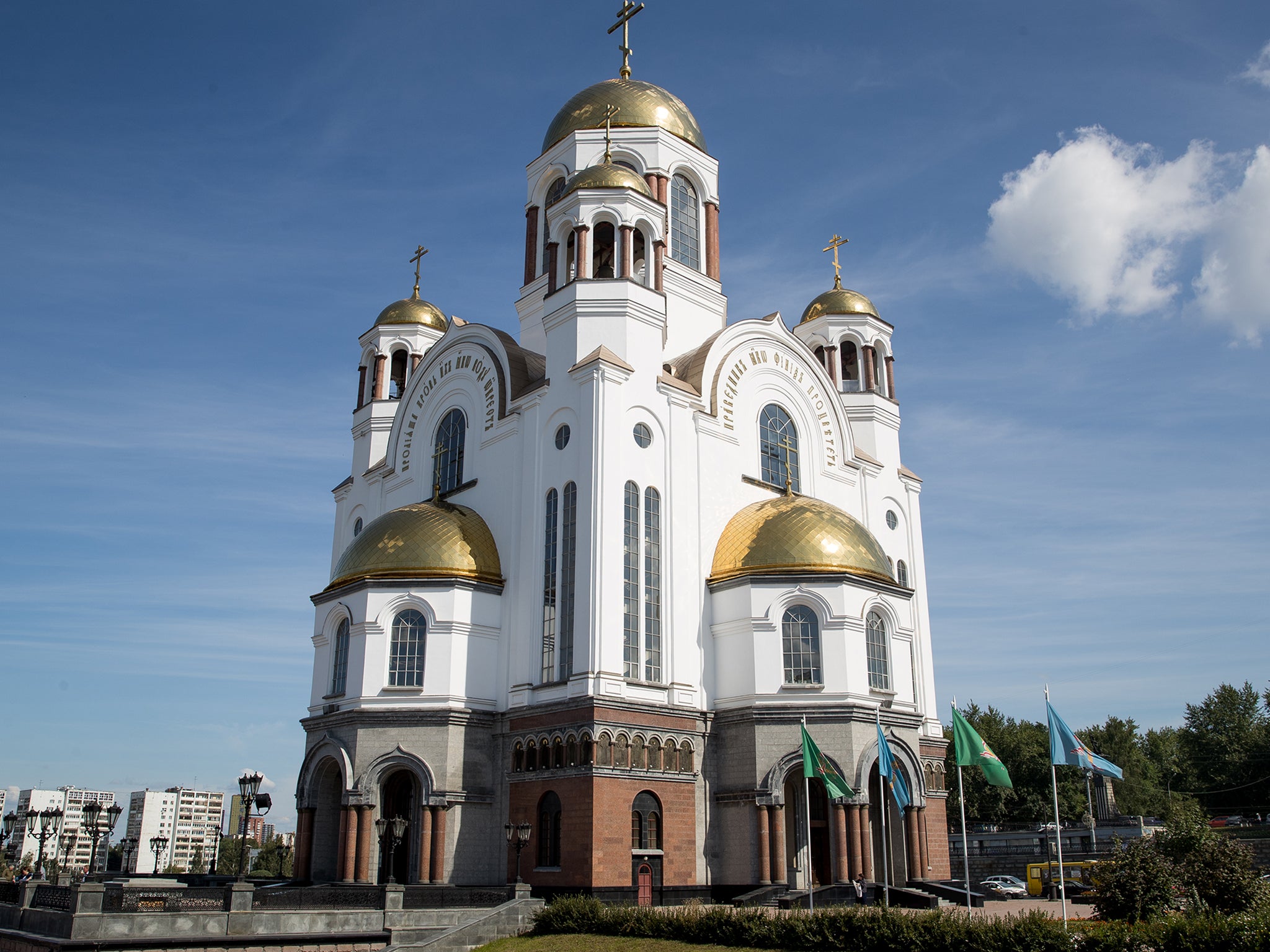
This is the only venue in Asia, being on the far side of the Ural Mountains from Europe. A good way to get here is on the Trans-Siberian Railway, which takes a day and a bit from Moscow.
The golden-domed Church on the Blood was built in the early 21st century on the site of the 1918 Romanov executions – where the Russian imperial family were slaughtered on the night of 16-17 July 1918; the last match, Mexico v Sweden, takes place just three weeks before the sombre centenary.
Attractions are thin on the ground. If neither the Urals Mineralogical Museum nor the Ural Geology Museum appeals, then it’s a trip out of town to Rasputin’s birthplace, or settling for some lively nightlife. Among a collection of dodgy pubs and clubs, the Rosy Jane and Dr Scotch are better than most. To stay, try the Meeting Point Hostel, a typical Russian apartment which has been fitted out with bunk beds for tourists.
Yekaterinburg’s arena is the ground that is furthest from Moscow and possibly the one that could be back in the USSR. The stadium was built in 1953, the same year as Stalin died. British fans who went to support their team in Uefa away games against Soviet teams such as Tractor Minsk and Dinamo Tbilisi will be familiar with the style.
If it’s a dull match, Fifa recommends that you enjoy the “architectural and decorative features typical of Soviet neo-classicism used lavishly in the construction of the stands, along with decorative art in the form of sculptures, vases and banners.” It holds 35,000 aesthetes.
Volgograd
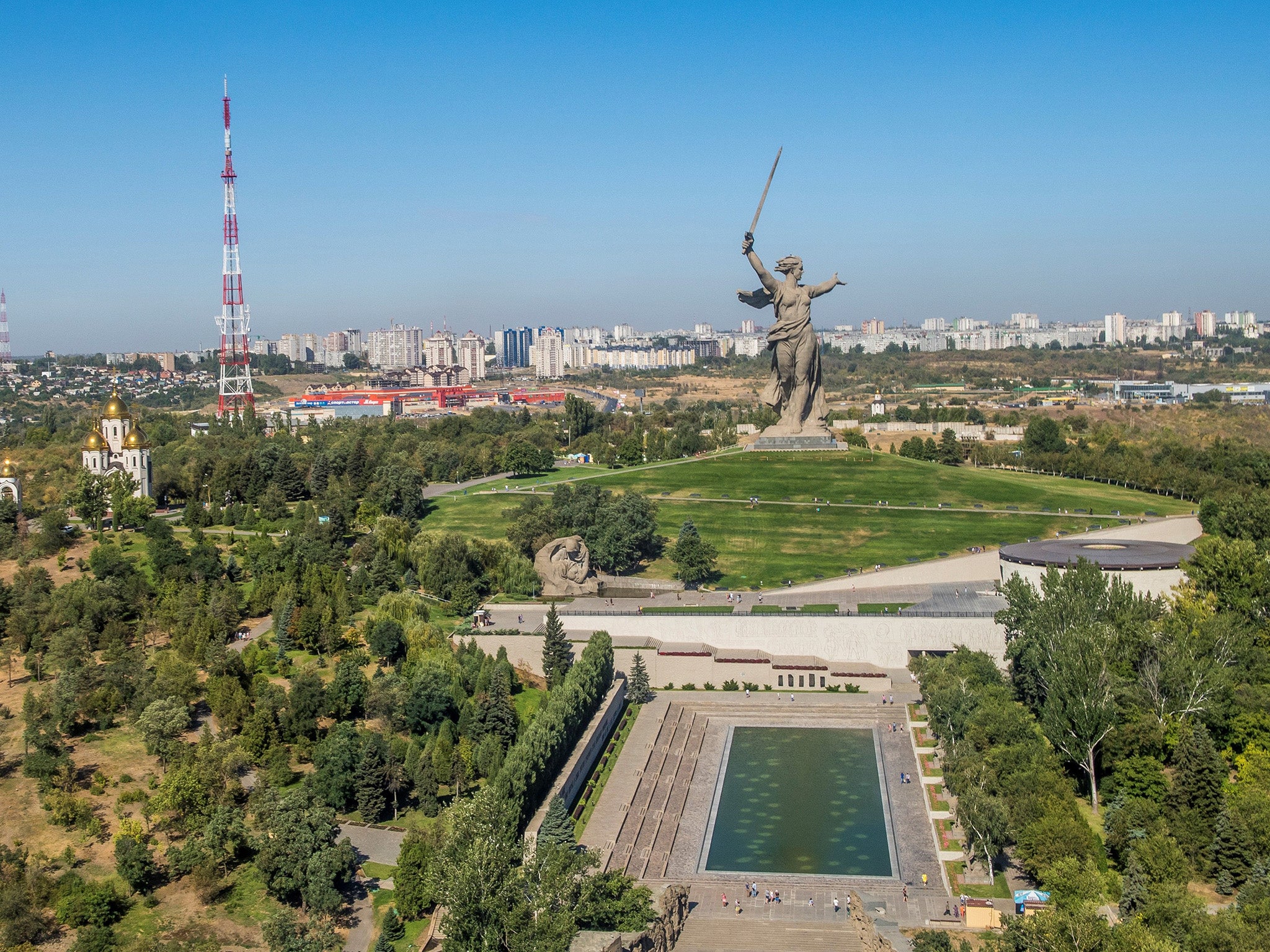
Volgograd is full of ghosts. In the Second World War it was known as Stalingrad, and was the venue for the bloodiest battle in the history of warfare. The German Sixth Army was destroyed and one million Soviet lives were lost over the course of almost six months of hand-to-hand fighting in what the Germans called the Rattenkrieg (“Rat War”).
Most of the city was destroyed, too. Mamaev Kurgan is the rise two miles north of the city centre, known as Hill 102, which changed hands many times with the loss of thousands of Red Army and German lives, and it’s now a war memorial. You can reach it on a high-speed tram.
The World Cup stadium is at the foot of Mamaev Kurgan. Were there a prize for “stadium that looks most like an upside-down Ikea lampshade”, it would certainly go to the Volgograd arena.
“The stadium’s facade takes the form of an inverted, truncated cone with an open lattice structure, lending the entire building a monumental solidity,” says Fifa, adding “The design for the façade supports and the windbreaks embody aspects of a Victory Day firework display.” After Russia 2018, the 45,000-capacity ground will be home to FC Rotor, formally known as Tractor Stalingrad.
If you are in town to see England’s campaign kick off against Tunisia on 18 June, consider staying in the Hotel Bank – in a converted office block above a bank.
The England game is the most notable game of the tournament in Volgograd. Some reports suggest that Cossacks may be drafted in to, er, help with crowd control.
Kazan
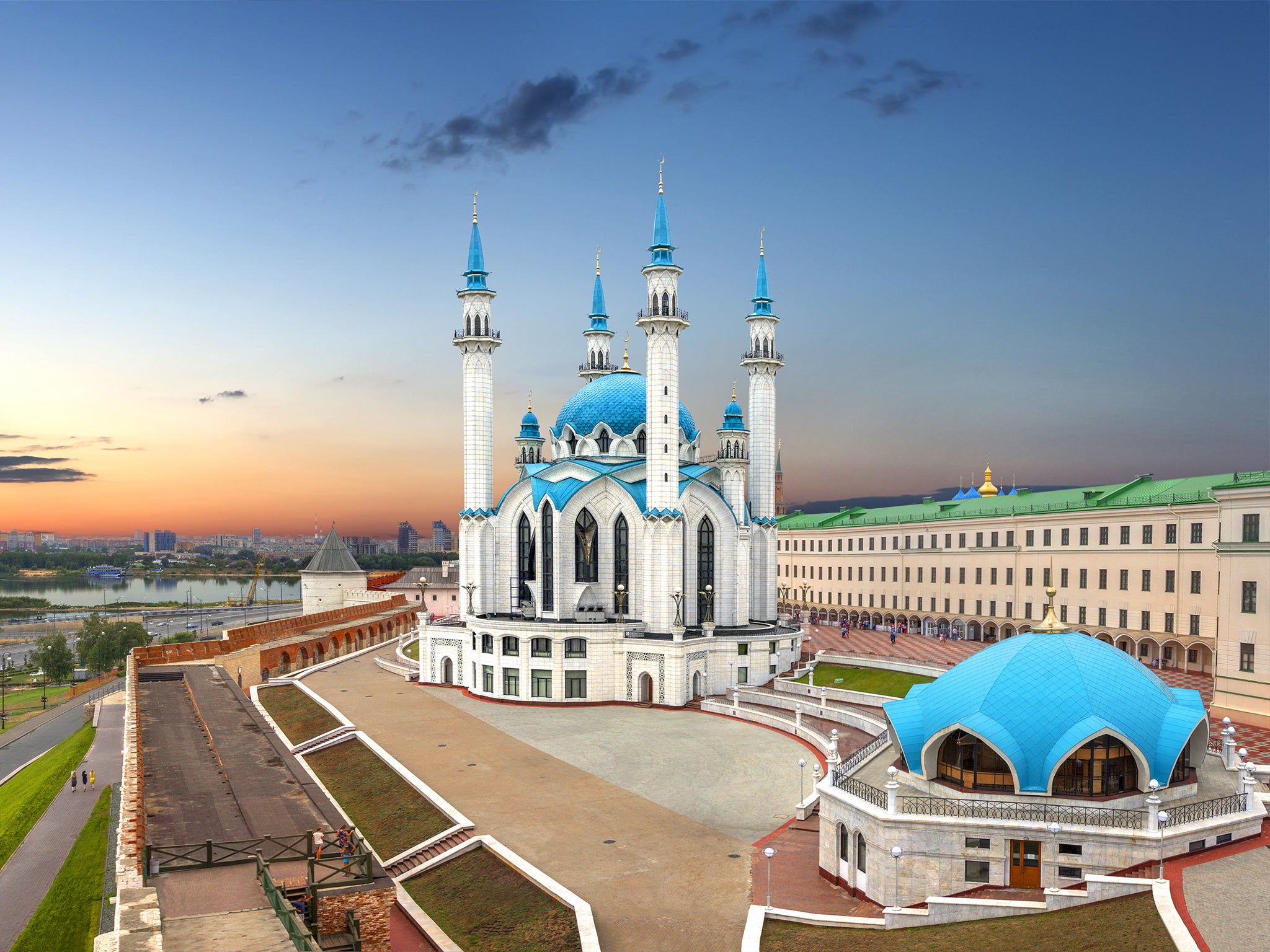
Catherine the Great declared Kazan to be the third-most-beautiful city in Russia, after St Petersburg and Moscow. It is the capital of Tatarstan, the Austria-sized part of Russia inhabited by descendants of Genghis Khan, and gives a sense of Europe meeting Asia.
The “cathedral mosque” of Kazan is decked in a confusion of scripts: Russian, the lingua franca of most of the devotees; Arabic, the language of Islam; and Roman, to assist the bewildered Western visitor.
The lively market is known, unappetisingly, as the “intestine of Kazan”. Lenin looms large in Kazan. As Vladimir Ulyanov, he studied for a while at the university. When Mick Jagger got thrown out of the LSE, he started the Rolling Stones; when Lenin was ejected from Kazan University, he created the Soviet Union. I stayed in the Youth Hotel, across the river from the main part of Kazan, for £60 a night. You can dine in the Baker Street Restaurant. Curiously, the specialities are Japanese.
The Kazan arena began life as venue for the Summer World University Games in 2013, when it hosted the opening and closing ceremonies. Two years later it hosted some of the competitions at the World Aquatics Championships; two 50-metre swimming pools were installed. Once all the running and swimming were over, a football pitch was laid.
You might recognise the style, because the architect was Populous: the same people behind Wembley, the Emirates and the Olympic stadium in London. “Viewed from above, the arena, which stands on the banks of the Kazanka river, resembles a water-lily,” says Fifa. Capacity 45,000.
France play Australia on 16 June, while on 27 June South Korea meet Germany to settle Group F. There’s also a Round of 16 match and quarter-final.
Rostov on Don
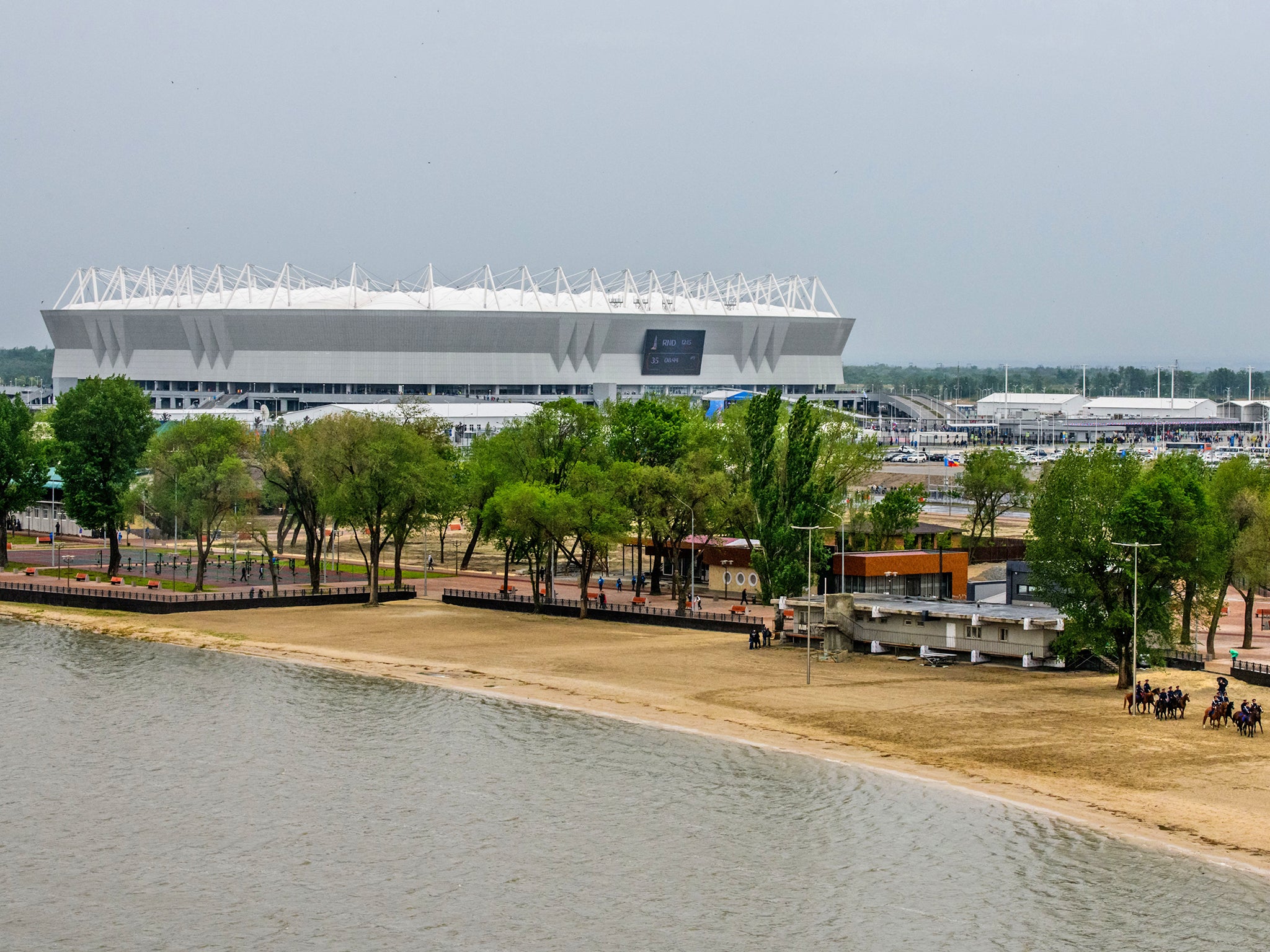
To get the measure of this city: for somewhere to stay, the Lonely Planet guide recommends the Airport Hotel, 20 minutes out of town. Enough said. In town, the main drag, Pushkinskaya Ulitsa (“Pushkin Street”), the October Revolution Park and the Don riverside are the main attractions – after dark, the waterside is lined with bars and fast-food takeaways, and there’s a noisy party boat on the river. To continue with the theme, the Kraft Bar sells five house brews, two varieties of medovukha (honey ale) or homemade cider.
Some 45,000 people will fill the Rostov-on-Don Arena, which has been completed despite holdups caused by the discovery of Second World War unexploded bombs. If the game is dull, there’s a treat on offer: “The varying heights of the stands allow spectators to savour not only what is happening on the pitch, but also to enjoy views of Rostov-on-Don.” Or they could just look at the roof, which “imitates the meanderings of the Don River”. Yes, just like Doncaster Rovers, FC Rostov play beside the River Don. The Russian river, though, is 1,200 miles long.
England will end up here for the round of 16 match on 2 July if they win Group G; before that, the pick of the games is the first, on 17 June: Brazil v Switzerland.
Samara
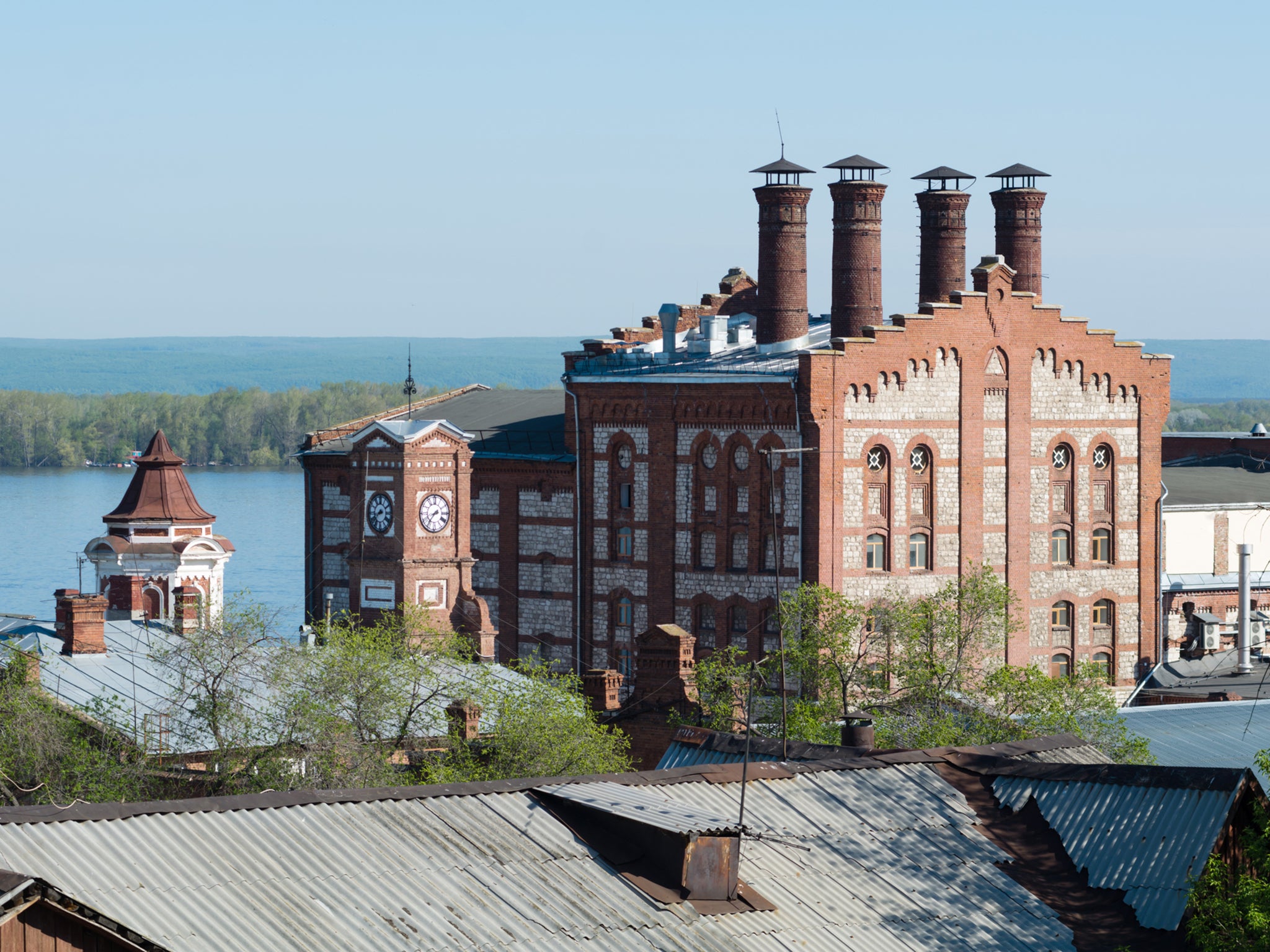
The most popular Russian drinking song is about Samara: it goes “Oh, Samara the little town, I am so restless – give me some rest” – not quite “Roll Out the Barrel”.
Fittingly, though, the top sight is the riverside Zhiguli brewery, regarded as one of Russia’s best. In the 1980s, Zhiguli’s beer was exported to Britain with the slogan: “Grab a Russian, buy Zhiguli’s.”
The main draw is Stalin’s Bunker, dug for him in 1942 just in case the Eastern Front of the Second World War reached Moscow (it got very close). Samara had been designated as the USSR’s second capital city.
Two thousands convicts were deployed to create it 120 feet below ground, beneath the Academy of Culture and Art.
Grab a room at the Bristol Zhiguli hotel, “located simultaneously in the historic and business centre of the city”. And eat at Staraya Kvartira, where you go in through a souvenir shop into what feels like someone’s old flat.
Construction began on the Samara Arena less than four years ago, and has been finished close to the wire. The stadium in the Radiotsentar district resembles a cross between a flying saucer and an airport terminal, only holding rather more people: 45,000. The design is said to be inspired by space.
FC Krylya Sovetov are the club lucky enough to be taking over – and leaving behind their current stadium, which has the marvellous name of Metallurg.
Before that, Costa Rica play Serbia on 17 June; Uruguay play Russia on 25 June, which should be a lively game; there’s also a round of 16 match and a quarter-final.
Saransk
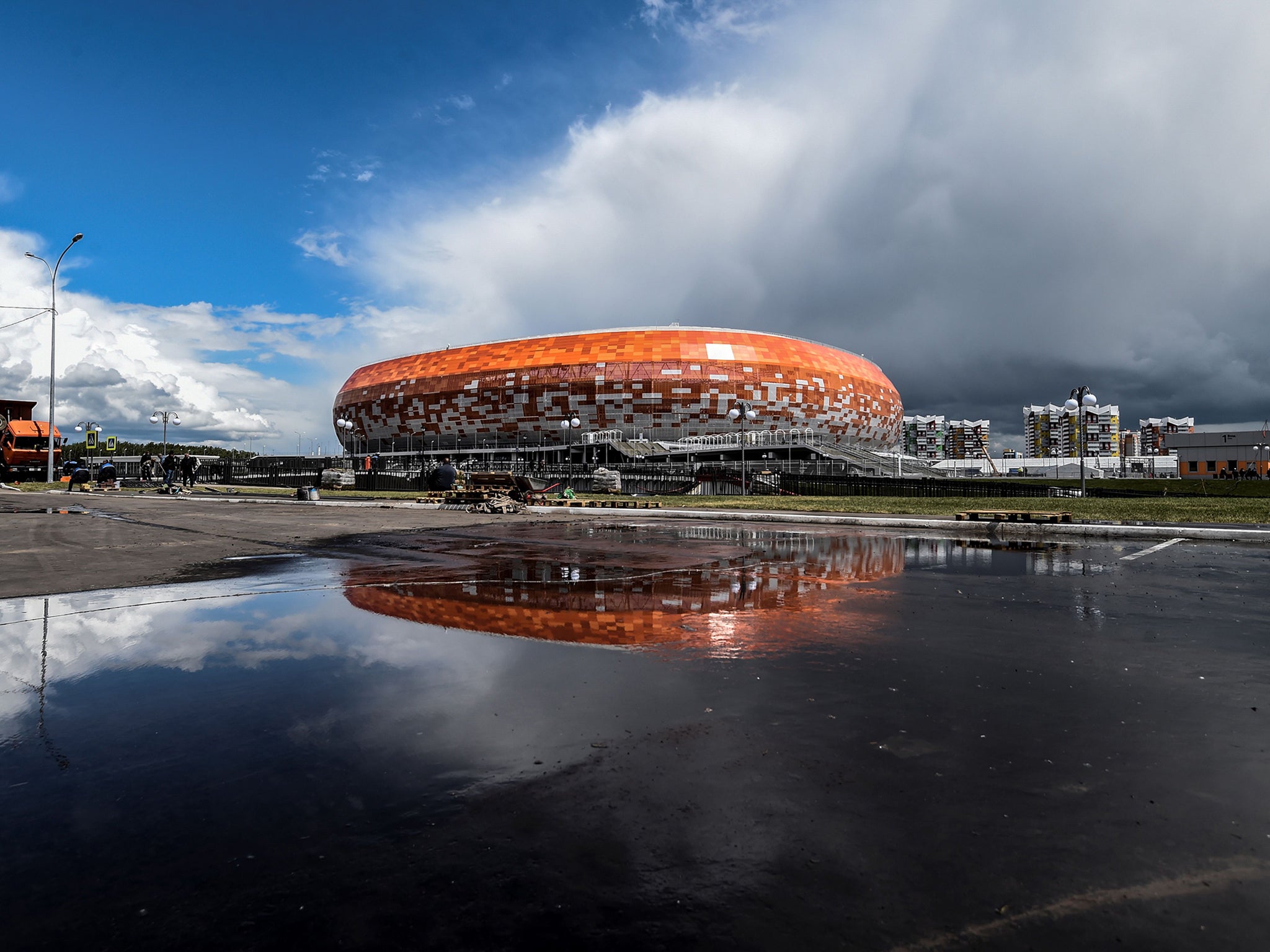
The match with most empty spaces in the stands? I predict the Group G game between Tunisia and Panama on 28 June in Saransk. Neither team will be taking many fans, and no one would choose to visit Saransk when they could be in one of the other host cities.
It’s been a struggle finding any reason to go to Saransk, apart from being able to say you have been to the capital of Mordovia. It might sound like a made up Eastern Bloc country; in fact it’s a real eastern bloc country, a republic in the middle of Russia.
The 800-page Lonely Planet Russia can’t find room even for a paragraph. Fifa says: “There are many museums in the republic. The largest ones include the Mordovian Republican United Museum of Regional Studies and the Museum of Mordovinian Culture in Saransk.”
Not being much of a draw, Saransk doesn’t have much in the way of accommodation. On TripAdvisor someone writes: “How can World Cup be given to Russia or be put in a city like Saransk if they do not have hotel rooms?” Well, there is the brand-new Mercure Saransk Hotel, but I can’t see beds available even for the Panama v Tunisia game.
If you do find yourself looking for something to do before the big match, head for the Lenin Cultural Park.
The Mordovia arena is right in the bleak heart of downtown. You’ll spot it as the very large orange object, like a stadium sponsored by easyJet. Work on the ground began in 2010, the 1,000th anniversary of the unification of the Mordovian people with Russia’s other ethnic groups.
To show how thin the population is, after the World Cup the arena’s capacity will shrink to 25,000 – which is still a lot more than the average home gate for FC Mordovia Saransk.
The first game, on 16 June, is Peru v Denmark, which is a promising start. After that, leave town. Conveniently, the airport is only two miles from the city centre.





